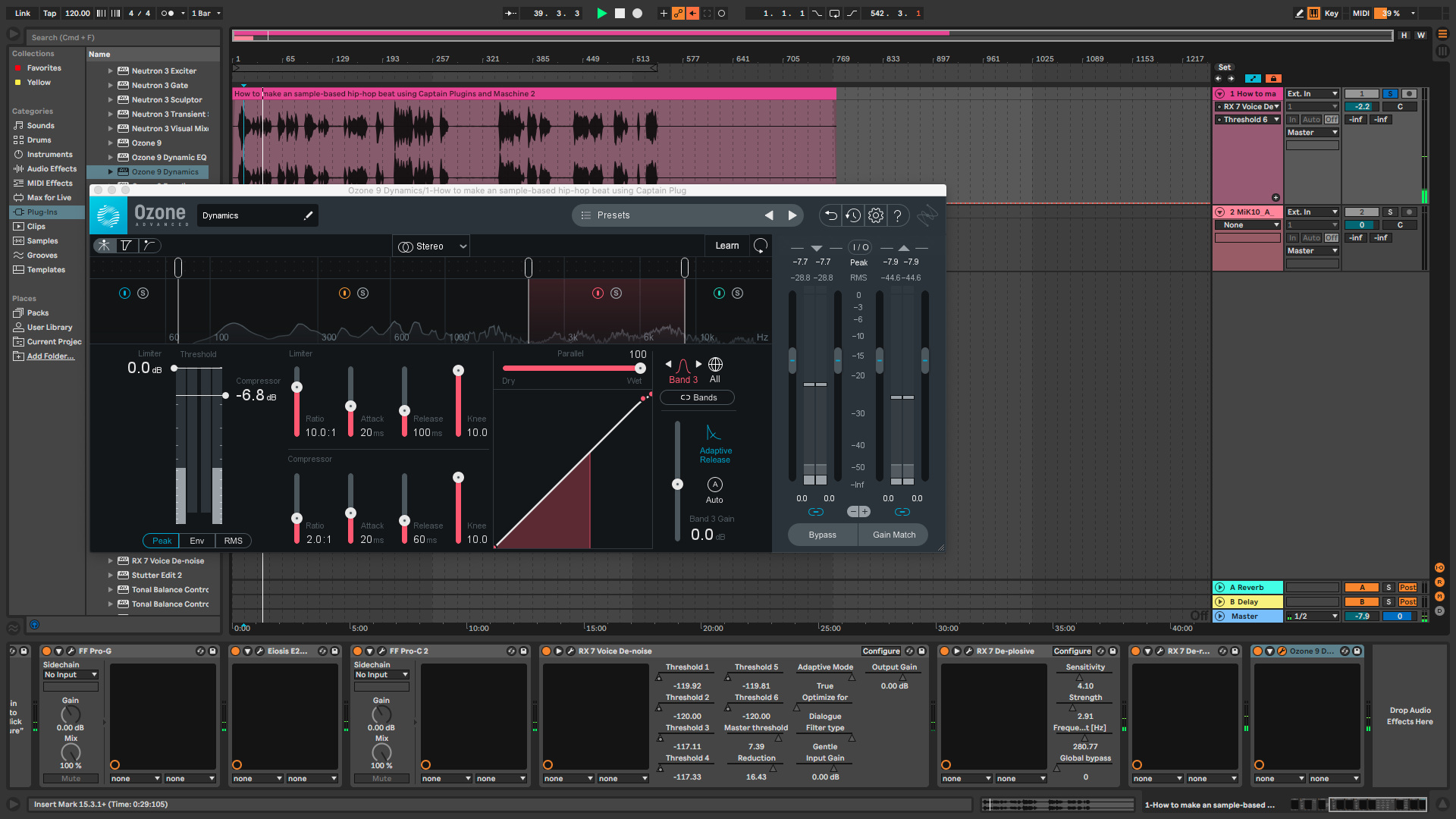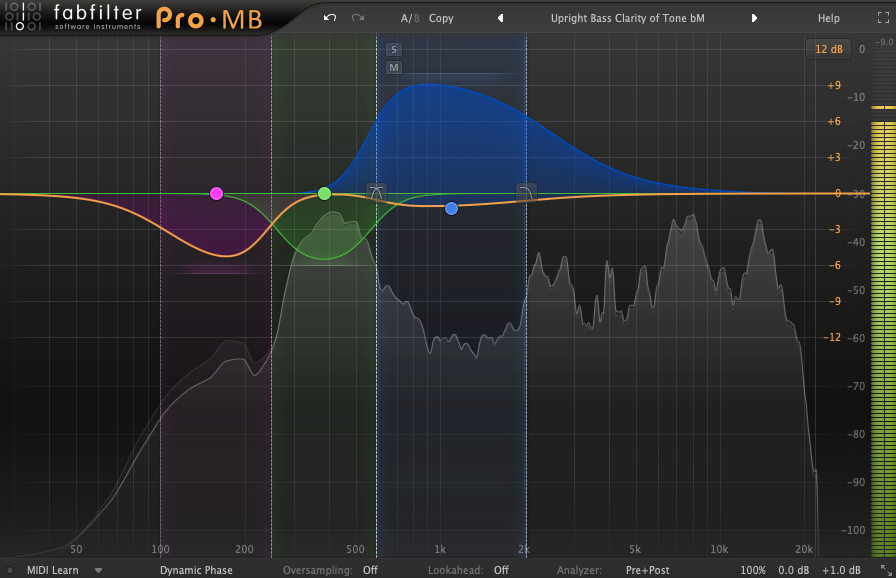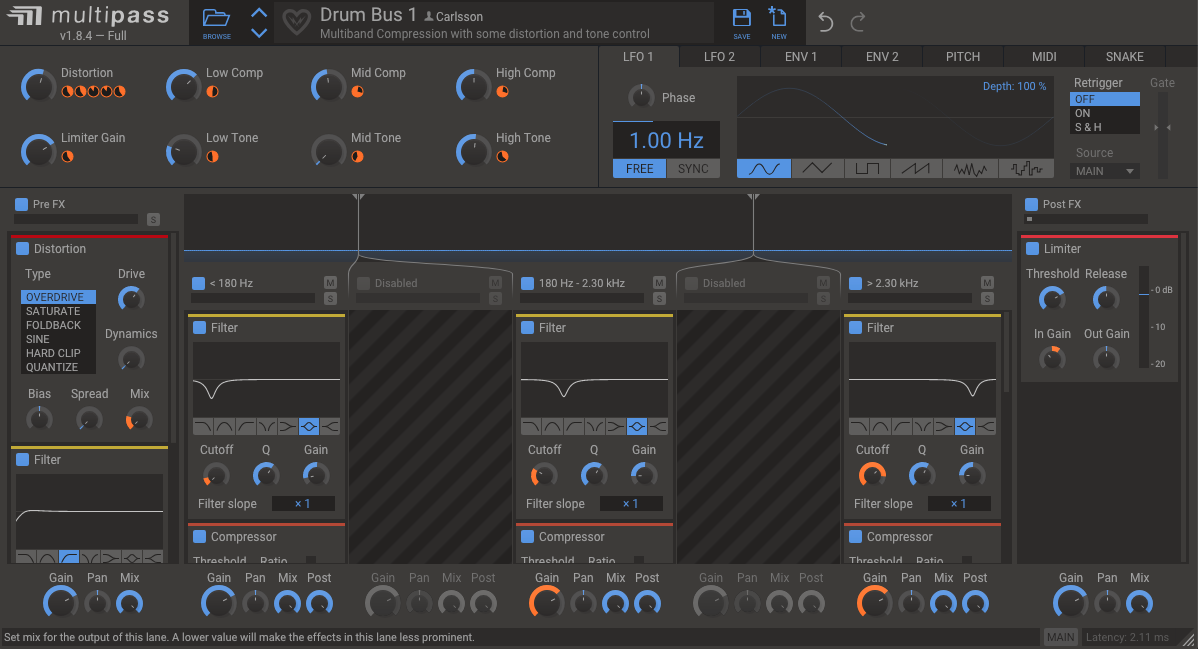Muliband Compression (and how to use it).

Multiband compression can be a pretty daunting proposition, and there are a lot of myths about it. When used smartly, it is extremely powerful and can enable more precise control over your sounds. It’s important to learn when it’s an appropriate tool, when it’s overkill, and if you do use it, how to use it properly.
What is multiband compression?
Multiband compression is a method by which we can apply compression in differing degrees to different parts of the frequency spectrum. It’s like having separate compressors for lows, mids and highs. Each compressor, or ‘band’, can have completely different ratio, attack, threshold and release settings.
Some multiband compressors have a fixed number of bands, such as Waves C4, while others, like FabFilter’s Pro-MB can host as many as the user desires. You can also set the input source of any band to external and sidechain the multiband compression to other input sources.
PRO TIP: .
One important consideration, when using a multiband compressor, is the distribution of the bands. It’s important to divide the bands according to the material being compressed. For example, if a vocal is present between 120Hz and 4000Hz, having a band inside that range, cutting the vocal in two, could cause strange reproduction, particularly if the settings in each band are very different.
There are 3 main uses for multiband compression in a mixing/production context. Check out this detailed case study: 3 Killer uses for Multiband Compression.
In the article, you will find detailed analysis and suggested settings to achieve profound results with multiband compression.
Multiband compression is ultimately the same as using multiple compressors at once, but dedicating each one to different frequency bands.
Once this concept is cystallised in your mind, it becomes easier to understand when and how this might be useful. In general terms, multiband compression is used when using just one compressor solves one problem, but creates another. For instance, perhaps a bass guitar recording is overly bassy. All that deep low end needs to be controlled, but by using one compressor with tight compression settings, you might sacrifice the dynamics in the higher frequencies. When the guitarist plucks or strums the bass, those sharp attack sounds help define the bass sound. Squash them along with the low end and you may end up with a dull, lifeless bass guitar. Multiband compression helps, here, because we can squash the lows but retain the highs, using software compression settings.
Example:
This bass part is boomy in places but lacks articulation definition in the mids. It sounds a little wooly.
With some multiband compression we can thicken and tighten the lows while accentuating the midrange. Gain Make-up then brings the sum level back to match the uncompressed recording.

Why not just use EQ?
Good question! There is no correct answer here. Sometimes, EQ, particularly dynamic EQ, can rectify the audio problem while retaining all the dynamics. However, as we know, compression is a very powerful tool that helps accentuate or control certain parts of an audio signal. Sometimes, different dynamic compression settings in different frequency bands make a more profound difference than simply boosting or shelving frequencies. The example above with the bass guitar is a good example of how multiband compression can enhance or repair an audio signal in a way that an EQ can’t. If you just boosted the upper frequencies to accentuate the plucking/strumming, you would not get the transient attack enhancements that compression gives.
Write Chords Faster with Captain Chords
- Use Captain Plugins to write your own Chord Progressions, Hooks, Melodies and Basslines
- Export to your DAW
- Available on Mac and Windows.
Plugin evolution.

Kilohearts’ Multipass combines Multiband Compression with other devices such as saturation, transient shaping and much more. A great example of powerful, innovative new tools at work!
In these halcyon days of audio engineering and software development, there are plugins that almost render multiband compression redundant. This is because they offer so much control within their parameters, that you may be able to achieve the results you want without dynamic compression of multiple filter bands. In other words, you might find you can use a ‘smart’ EQ such as Baby Audio ‘Smooth Operator’, Melda ‘DynaQ’, Newfangled Audio ‘Equivocate’, or Tokyo Dawn ‘Nova’ and leave the dynamics fully intact. These plugins are designed to offer more powerful, frequency-dependent solutions to problems that multiband compression would traditionally resolve.
Multiband compression is an advanced technique, so if you aren’t sure whether you need it, it’s probably best to avoid it. When you recognise the need for it, that may signify that you’re ready to apply it.
Multiband compression on the Master Out?
This is a contentious point. Most producers and engineers say no, but some swear by it. It might be better to leave the broad-brush strokes to a mastering engineer. By adding multiband compression on the master out, you are reducing the options for the matering engineer, and quite possibly using compression to fix mix mistakes. You might be better off going back into your mnix and finding the cause of the imbalance in the first place. But, as always, if you feel it enhances your track, go for it. Rules are made to be broken!
Use your ears above all.
Getting compression to sound sweet is tricky, and it takes practice. With so many options and so many styles to choose from, just deciding what your goals are is hard enough. Ultimately, you need to constantly consider how it sounds, both ensemble and in isolation.
More on compression:
Compression (and how to use it). Glue Compression (and how to use it). Mid/Side Compression (and how to use it). Parallel Compression (and how to use it). 3 Killer uses for Multiband Compression.About the author:

